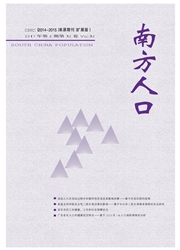

 中文摘要:
中文摘要:
文章利用2013年全国流动人口动态监测数据,使用二项Logistic方法深入探讨了家庭化流动对流动人口的就业率和就业稳定性的影响程度及其性别差异。研究结果显示,家庭化流动模式的不同对流动人口就业状况的影响有显著的性别差异。对于在流入地实现完整家庭流动的流动女性来说,她们在就业过程中往往呈现出就业率低和就业不稳定的特征;与此不同的是,家庭化流动虽然对男性流动人口的就业率没有显著影响,但其对男性流动人口的就业稳定性有显著促进和提升作用。另外,个体因素、地区因素和社会经济因素等也会显著影响不同性别流动人口的就业状态。最后,本文还针对研究结果提出了几点政策建议。
 英文摘要:
英文摘要:
Based on the data of 2013 national dynamic monitoring survey of migrant population, this paper adopts logistic regression analysis and evaluates the impacts of family migration on employment rate and stability of floating population and its gender difference. The results show that the types of family migration significantly impact on the employment of the floating population with gender differences. The females with family migration show a relatively lower employment rate and stability, while the males with family migration show no significances in employment rate of floating population but positively improve their employment stability. The employment rate and stability of floating population can be affected by individual, regional and social economic factors. Some policy implications are put forward accordingly.
 同期刊论文项目
同期刊论文项目
 同项目期刊论文
同项目期刊论文
 期刊信息
期刊信息
